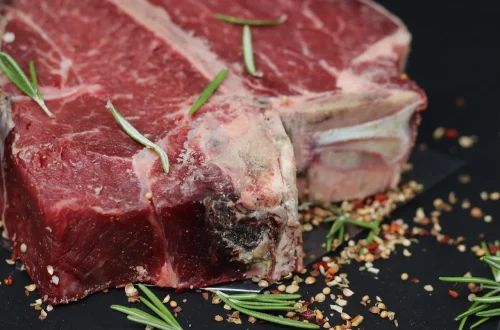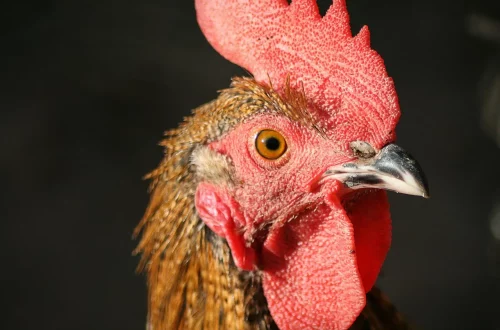-
How Many Grains Are in a Pound? A Simple Guide to Conversion
Understanding the measurement of grains and pounds can be perplexing for many, especially those who are new to culinary practices or food science. Grains are a traditional unit of mass that has been used for centuries, primarily in measuring precious metals, seeds, and grains themselves. In modern times, it serves a crucial role in various fields including cooking, nutrition, and even pharmacology. A grain is defined as 1/7000th of a pound, which makes it a very small unit of measurement. This means that when we talk about the number of grains in a pound, we are delving into the intricacies of weight conversions that can often lead to confusion. For…
-
For the Love of Good Food: Discovering Delicious Cereal Varieties
Good food is a universal delight, transcending cultures and traditions. It connects us, evokes memories, and offers comfort in times of need. Among the myriad of culinary options available, breakfast remains a sacred meal, often deemed the most important of the day. Cereal, a staple in many households, stands out for its convenience, versatility, and satisfying crunch. The love for cereal runs deep; it’s not just about the nutrition or the quick preparation. It’s about the endless varieties that cater to diverse tastes and dietary preferences. From sweet to savory, and crunchy to soft, cereals can be tailored to individual palates. This food category has evolved tremendously over the years,…
-
Converting Grains to Pounds: A Simple Guide for Accurate Measurements
Converting grains to pounds is an essential skill for anyone involved in cooking, baking, or even scientific research. Understanding how to accurately measure grains in pounds can significantly impact the outcome of recipes, nutritional calculations, and even agricultural assessments. The complexities of measurement arise from the various types of grains, each possessing unique densities and weights, which can further complicate conversions. For instance, a cup of flour weighs differently than a cup of rice or oats. This variance necessitates a reliable method for converting grains to pounds to ensure accuracy in measurements. In a world where precision is paramount—whether you’re a chef crafting the perfect dish or a scientist conducting…
-
Converting Grains to Pounds: A Simple Guide for Accurate Measurement
Understanding the conversion of grains to pounds is an essential skill for various industries, from agriculture to culinary arts. Whether you’re a farmer looking to measure your harvest accurately or a chef aiming for precise ingredient proportions, grasping this conversion can significantly impact your work. Grains and pounds are two different units of measurement that serve unique purposes. Grains are often used in contexts involving small weights, particularly in fields like pharmacology and precision engineering. On the other hand, pounds are more commonly utilized in everyday scenarios, especially in cooking and nutrition. The significance of accurate measurement cannot be overstated. Inconsistent measurements can lead to issues such as ingredient imbalance…
-
How Many Grains Are in a Pound? Understanding the Conversion
Understanding the weight and measurement conversions is crucial for various fields, ranging from cooking to scientific research. One such conversion that often puzzles individuals is the relationship between grains and pounds. Grains, being one of the smallest units of mass in the imperial system, can be challenging to grasp, especially when trying to relate them to larger units like pounds. This confusion is compounded by the fact that different contexts—such as culinary measurements, agricultural calculations, or pharmacological dosages—can all utilize these units in varying ways. In essence, a pound is a larger measurement that contains a specific number of grains. This relationship is fundamental not only for accurate measurements but…
-
How Many Grains Are in a Pound? A Simple Calculation Guide
In the world of measurements, understanding the relationship between different units can often feel daunting. This is particularly true when it comes to grains and pounds, two units that serve distinct purposes in various fields such as cooking, agriculture, and engineering. Grains are typically used to measure the mass of small objects or substances, while pounds are a more common unit in everyday life for larger quantities. This discrepancy can lead to confusion, especially for those who are not well-versed in measurements. The grain is a unit of weight that has historical roots and is still utilized today, especially in the fields of medicine and precision engineering. Conversely, the pound…
-
Understanding the Number of Grains in a Pound: A Simple Guide
Understanding measurement conversions can sometimes feel daunting, especially when it comes to weight. One common unit of measurement that often confuses many is the grain, particularly when considering its relationship to pounds. The grain, a historical unit of weight, finds its roots in the ancient practice of measuring precious metals and grains of cereals. It may seem like a small measurement, but it plays a crucial role in various fields, from cooking and baking to pharmaceuticals and firearms. In the world of weights and measures, understanding how different units relate to one another is essential for achieving accuracy. For instance, when baking, even a slight error in measurement can lead…
- Uncategorized
Understanding the Conversion from Pounds to Grains Made Easy
Understanding the Conversion from Pounds to Grains Made Easy In an increasingly globalized world, understanding various measurement systems is essential for effective communication and trade. The need to convert between different units of measurement arises in various fields, from cooking and baking to scientific research and industrial applications. Among these units, weight measurements often present challenges due to the diversity of systems used across different regions and industries. The pound and grain are two units of weight that can be confusing for many. The pound has been widely adopted in the United States and other countries, while grains are more commonly utilized in scientific settings, particularly in fields such as…
- Uncategorized
Understanding the Conversion from Pounds to Grains Made Easy
Understanding the conversion from pounds to grains can seem daunting at first, especially if you’re not familiar with the measurement systems involved. The pound is a unit of weight commonly used in the United States and other countries that follow the imperial system, while the grain is a much smaller unit primarily used for measuring the weight of precious metals, grains, and medications. In everyday life, most people think in terms of pounds when discussing weight, whether it’s for cooking, shipping, or personal fitness goals. On the other hand, grains are often overlooked outside of specific contexts, like the pharmaceutical industry or detailed recipes where precision is essential. Despite this,…
-
Understanding Grains vs Pounds: A Comprehensive Guide to Weights
Understanding the various units of measurement we use in our daily lives can greatly enhance our understanding of food, nutrition, and even scientific data. When it comes to weight, two common units that often come up are grains and pounds. These two measurements serve different purposes and are used in various contexts, from culinary applications to scientific research. Grains, a unit of mass primarily used in the United States for measuring bullets and pharmaceuticals, represent a very small weight, while pounds are a more familiar and widely used unit in everyday life for measuring everything from groceries to body weight. The relationship between these two units can sometimes be confusing,…

































